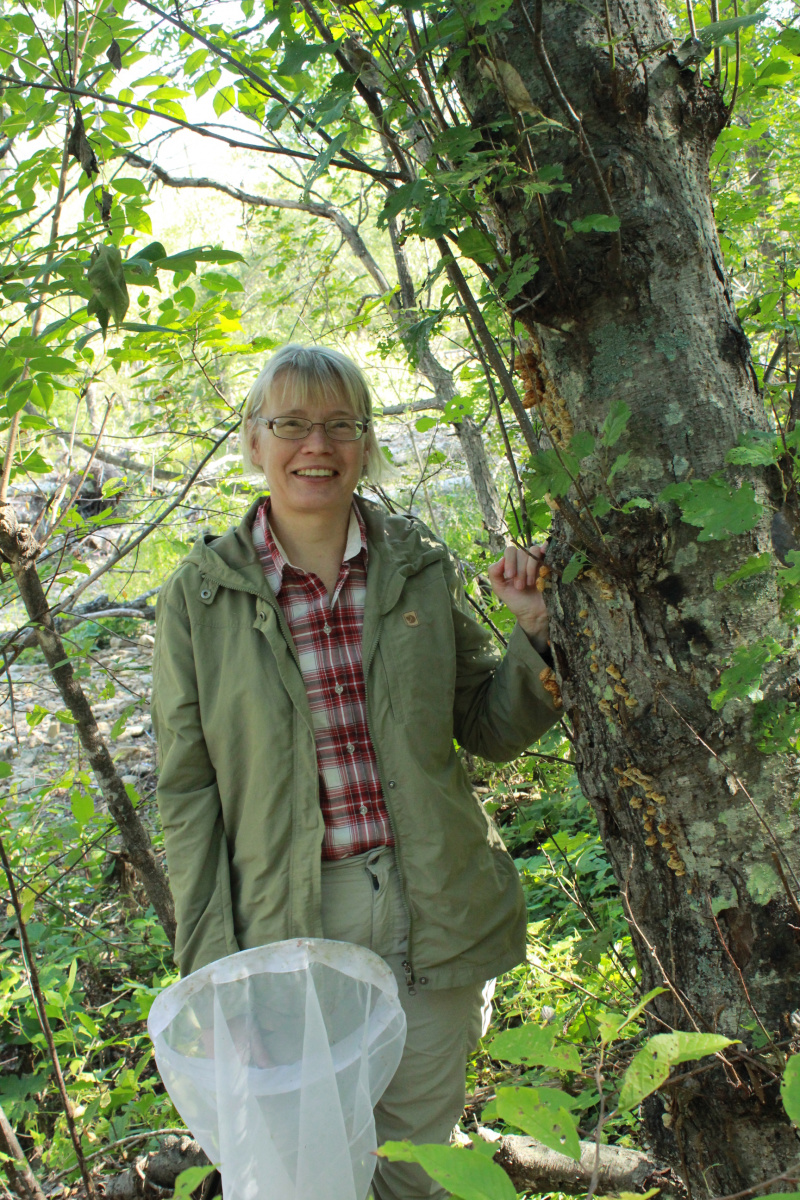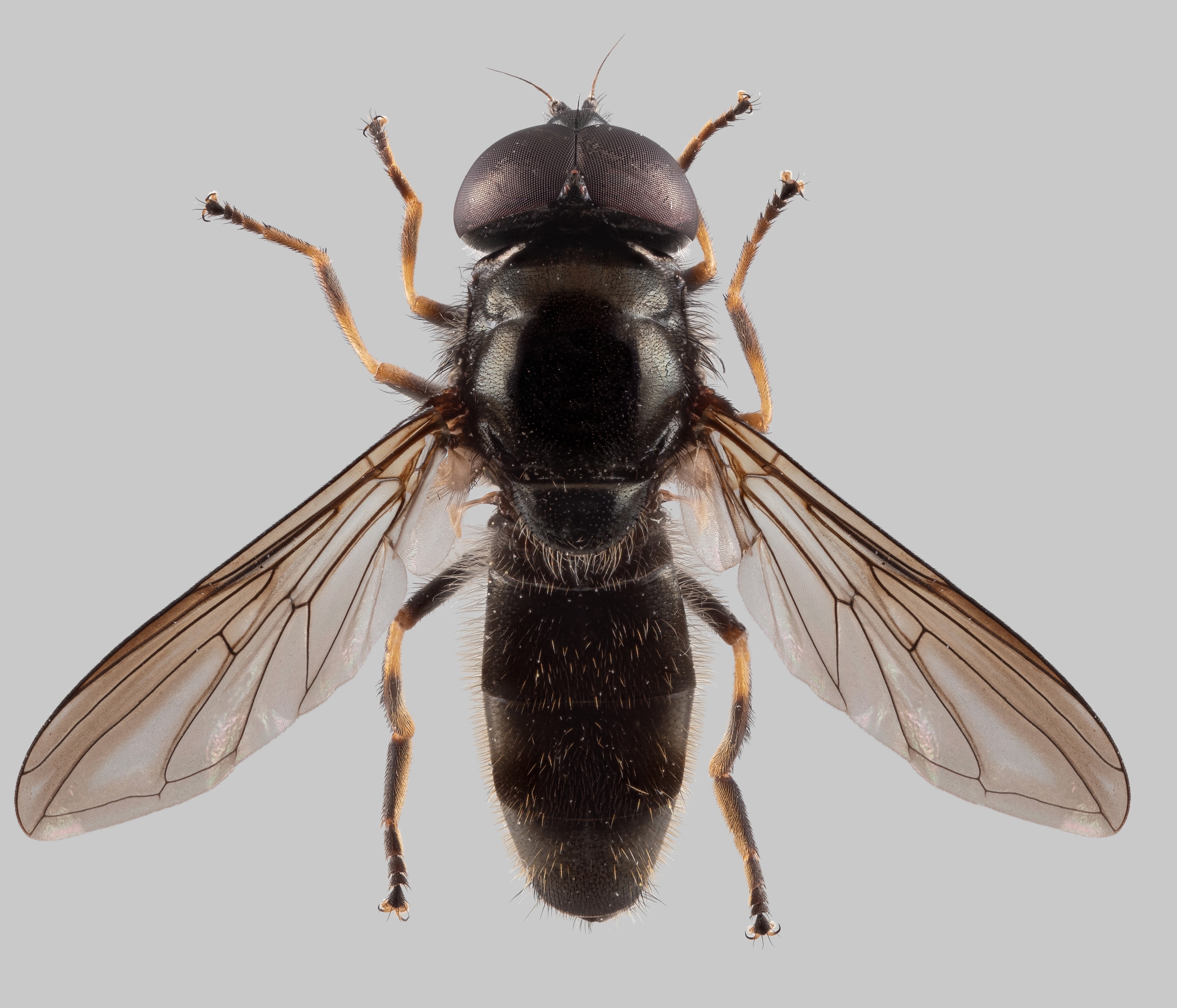Meet the Hoverflies experts: Gunilla Ståhls
This is the eighth in a series of interviews with the network of Experts involved in developing the IUCN’s European Red List (ERL) of Hoverflies. The project aims to assess the extinction risk of hoverfly species across Europe, and will contribute to guiding decisions and conservation action for these species at the European level.
In this edition of “Meet the Experts” we introduce Gunilla Ståhls, who is one of the assessors responsible for the creation of the European Red List of Hoverflies. Gunilla is based in Helsinki, where she works for the Genomic Resources Collection and the DNA research laboratory at the Finnish Museum of Natural History Luomus. Her research on hoverfly species taxonomy and evolutionary relationships makes of her one of the key experts on European hoverflies and since 2019, she has been working with her fellow assessors and IUCN to develop the first ever European Red List of Hoverflies.
Gunilla first got involved with the IUCN through the network of European expert of hoverfly taxonomists that were involved with the Red list assessments. She strongly supports the assessments as “a Red list of European Hoverfly species is important, as it hopefully attracts the focus of all types of media for this group of insects” and this is particularly needed as “hoverflies have not received proper attention for their roles as pollinators of wild flowers and grasses, as biocontrol agents on herbs, bushes and tree, and as organic waste recyclers in various liquid or semi-liquid decaying organic matter”.
She first developed an interest and passion for Hoverflies during her university studies, with her master’s thesis, which included the study of Cheilosia hoverflies. Furthermore, her PhD from the University of Helsinki focused on the phylogenetic relationships of the genus Cheilosia and of the family Syrphidae, regarding the application of DNA and morphological characters and she “was the pioneer in applying DNA sequence characters for taxonomic and systematic research questions for hoverflies in the 1990s”.
Gunilla’s enthusiasm for the genus Cheilosia has continued to this day. They are her favorite hoverfly group as they are “a very species-rich lineage of hoverflies distributed in the Holarctic region, with highest species number known from the Palaearctic region”. Specifically, within the genus Cheilosia she has one favorite subgenus, Taeniochilosia, with about 50 species in the Holarctic region.
However, Gunilla is concerned about the unknown future for the population of hoverflies as “most of the threatened hoverflies are European endemics and many have narrow distributional areas in Europe, or have fragmented populations. Increased urbanisation and intense agriculture inevitably leads to less undisturbed and unimproved habitat available”.
Gunilla believes it is essential to understand the importance of these insects. “Hoverflies provide and perform important ecosystem functions, and most hoverflies actually perform dual tasks” says Gunilla. For example “a large group of these species has larvae that feed on pest aphids, while the larvae of other species recycle organic matter and adult flies of the majority of species visit flowers and thus should be regarded as an important pollinator group on a global perspective”. The researcher sheds light that they even perform long-distance pollen transfer, as they “are capable of fertilising isolated plants, and doing so in climates that are unsuitable for bees and other pollinators”. Hoverflies can also be powerful allies of European farmers, Gunilla tells us, as “some species, which have exclusively plant-feeding larvae, are quite plant host-specific and have even been tested for control of noxious weeds”.
She believes that individual citizens can have an impact on hoverfly conservation: “Hoverflies have stronger populations in places where people plant for all types of pollinators, from butterflies to bees and birds. This helps to build an ecosystem with natural predators and prey for the garden’s inhabitants, and limits the need for insecticides and other harmful pesticides. Cultivating an array of flowering plants will ensure that nectar and pollen are available to pollinators throughout the growing season, from early spring to late autumn. Planting different crops in proximity (companion planting) can be done to increase insect pollination and crop productivity”.





